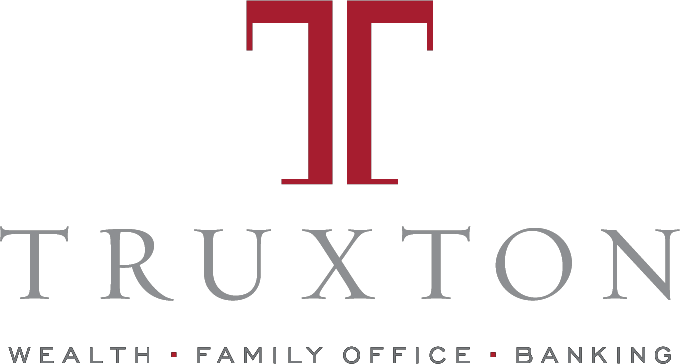Rebalancing The Opportunity Set
As we ring in the New Year, the economy, capital markets and global politics are in a very different position relative to New Year’s Eve 2021. 2022’s Market adjustments have been fast, large and painful. The S&P 500 index is in a “bear market,” customarily defined as a decline of 20% or more from the most recent high. The index first entered bear market territory in June and has revisited it several times after brief rallies. The root cause has been stubbornly high inflation and the Federal Reserve’s (the Fed) adjustment to a new/old reality that had lain dormant since before the Global Financial Crisis. The rapid progression of large interest rate increases has also hurt the value of bonds, which typically provide a refuge during difficult equity markets. While the declines have been most pronounced for speculative and interest rate sensitive investments, there has been no shelter. Returns on cash, though rising, have remained well below the rate of inflation.
The Fed’s change in mindset is easily summed up in two quotes from the same conference, two years apart:

Congress established a dual-mandate for the Fed: “price stability” and “maximum sustainable employment”. The 2020 comment from Jackson Hole reflected evidence that persistent disinflationary factors enabled the Fed to focus on full-employment broadly defined. The 2022 comment established that the first of the two mandates (price stability) is paramount. The Fed’s string of larger than normal rate increases clearly reflect that prioritization.
The Fed is increasing rates to hurt aggregate demand. That is how it works. At some point, it will stick. While the Fed still holds hope for a “soft landing”, it might look different than many anticipate. During the August 26, 2022 comments, Chairman Powell basically said 3 things:
- The Fed has a duty to fight inflation.
- Inflation needs to be dealt with quickly to avoid the insidious cycle of desperate employees demanding accommodation through wages.
- Once inflation cools, the Fed needs to maintain constraint long enough to be certain that prices are truly stable.
The final bullet effectively removes what has become known colloquially as the “Fed Put”, which is a belief that the Fed will become accommodative any time the economic situation becomes uncomfortable: rising unemployment, stress in financial markets, lower profits, lower 401k balances, etc. The “Fed Put” was a luxury of a long period of benign to inadequate inflation relative to the Fed’s explicit 2% inflation target.
Believe it or not, we see a silver lining. The shift in monetary policy has the positive long-term benefit of rebalancing the return opportunities between risk assets and risk control assets. We still believe equity returns will be better, but bond returns will not be paltry. Of course, this depends on the Fed succeeding in curbing inflation because current yields remain below current inflation. We believe they will succeed. We are encouraged by recent inflation readings; however, bringing inflation down to the Fed’s 2% target likely will take time and persistence. The Consumer Price Index has some items that adjust quickly and others that will respond with a significant lag, most notably shelter. Wage growth moderated in December, which is a promising sign.
For savers, we believe a more balanced opportunity set will allow people to better align allocations with risk tolerance. For the economy in general, higher real interest rates will force a more disciplined capital allocation process for company management and investors alike. Accommodative Fed policy has been an important driver of the economy and markets since the Global Financial Crisis. While useful in its time, dependence on low interest rates is not a sustainable driver of investment returns. Our hope is that some of the underlying fundamentals that drove the recent bout of inflation, low unemployment and strong household balance sheets, will support the economy without emergency level Fed intervention.
So what does all this mean for your portfolio?
Equities are most susceptible to severe declines. These declines remove speculative excess, drive more disciplined execution at the companies and reduce valuations to levels that attract new investment. While declines are never fun, they do play a constructive role in producing the compound returns that make equities appealing. Without intermittent adjustments, the good times would be more unsustainable and the bad times unbearable. From here, we acknowledge there could be more difficulty ahead. 2023 S&P 500 earnings forecasts have drifted lower and evidence suggests that the economy is cooling, which most likely will result in further earnings revisions. The S&P 500 price to earnings ratio has fallen from 21x to 16.9x, which is close to its 25-year average. While we believe additional downward earnings revisions are likely, market recoveries tend to be robust and unanticipated. We believe it is best to stay invested in durable assets that can be resilient through deeper corrections but also participate well in the eventual recovery. We are actively evaluating opportunities to purchase new assets that represent good future return potential. We are also harvesting tax losses, raising foreseeable cash needs and adjusting portfolio risk while the tax consequences are lower. Despite near-term headwinds, we believe that equities are the most reliable means of producing a return beyond the rate of inflation over time due to earnings growth. Inventories will get cleared, cost structures will be adjusted, and the pursuit of innovations will continue.
Bonds have performed worse than equities when compared to historical patterns. The Bloomberg U.S. Aggregate Bond Index has lost 13.01% in 2022. To put this in perspective, statistically anything worse than an annual 2% loss for this index is a rare event. We believe that investment grade bonds remain the most time-tested and cost-effective means of managing total portfolio risk. For existing bond holdings, investors can hold bonds to maturity, collect coupon payments and have the benefit of reinvesting maturities and income at higher prevailing rates. There is an opportunity cost to holding bonds that yield less than a new portfolio could yield, but we don’t believe it is worth taking the permanent loss of capital unless the loss provides significant tax benefit to someone in a high tax bracket. The best estimate of future returns on bonds is the yield to maturity at the time of purchase. Bond portfolios acquired today offer yields that haven’t been seen in years. This should benefit future portfolio returns when paired with equity performance at historical average levels.
One of the greatest advantages investors have is time. Avoiding situations that constrain this great advantage is critical to good outcomes over the long-term. We believe that 2022’s severe adjustments affirm a commitment to an investment program designed around the core principle: don’t get caught out of position. The combination of an appropriate asset allocation and durable assets produced disappointing results in 2022, but there is no need for a portfolio overhaul. Overhauls are expensive and create significant risk of overcommitting based on a short memory. We believe that asset allocation is fundamentally a strategic decision based on each individual’s required return and risk tolerance. A good strategy is carefully conceived and rarely changed. We believe higher bond yields and lower equity valuations improve long-term return potential at every allocation. We wish you a happy and prosperous 2023.

